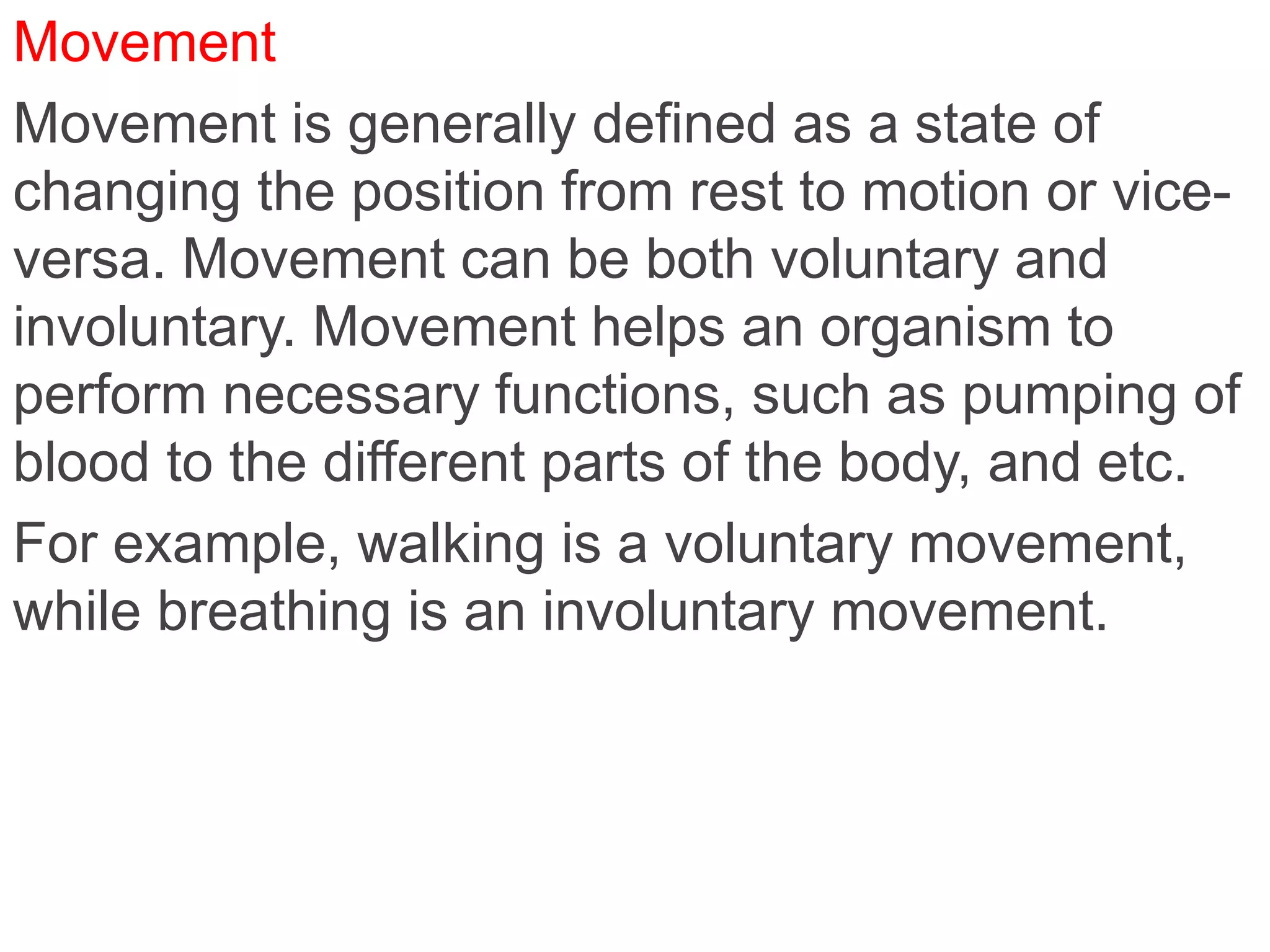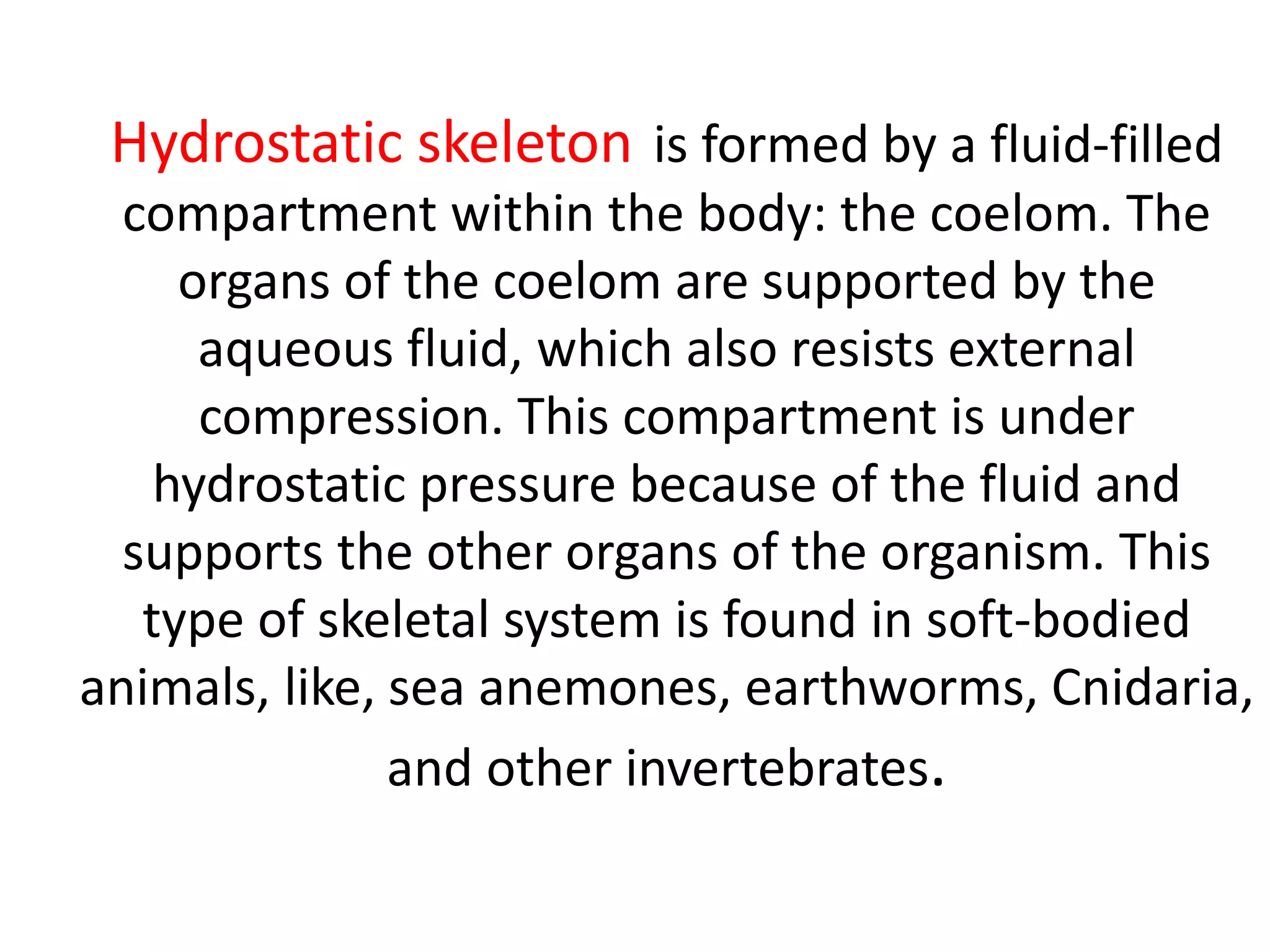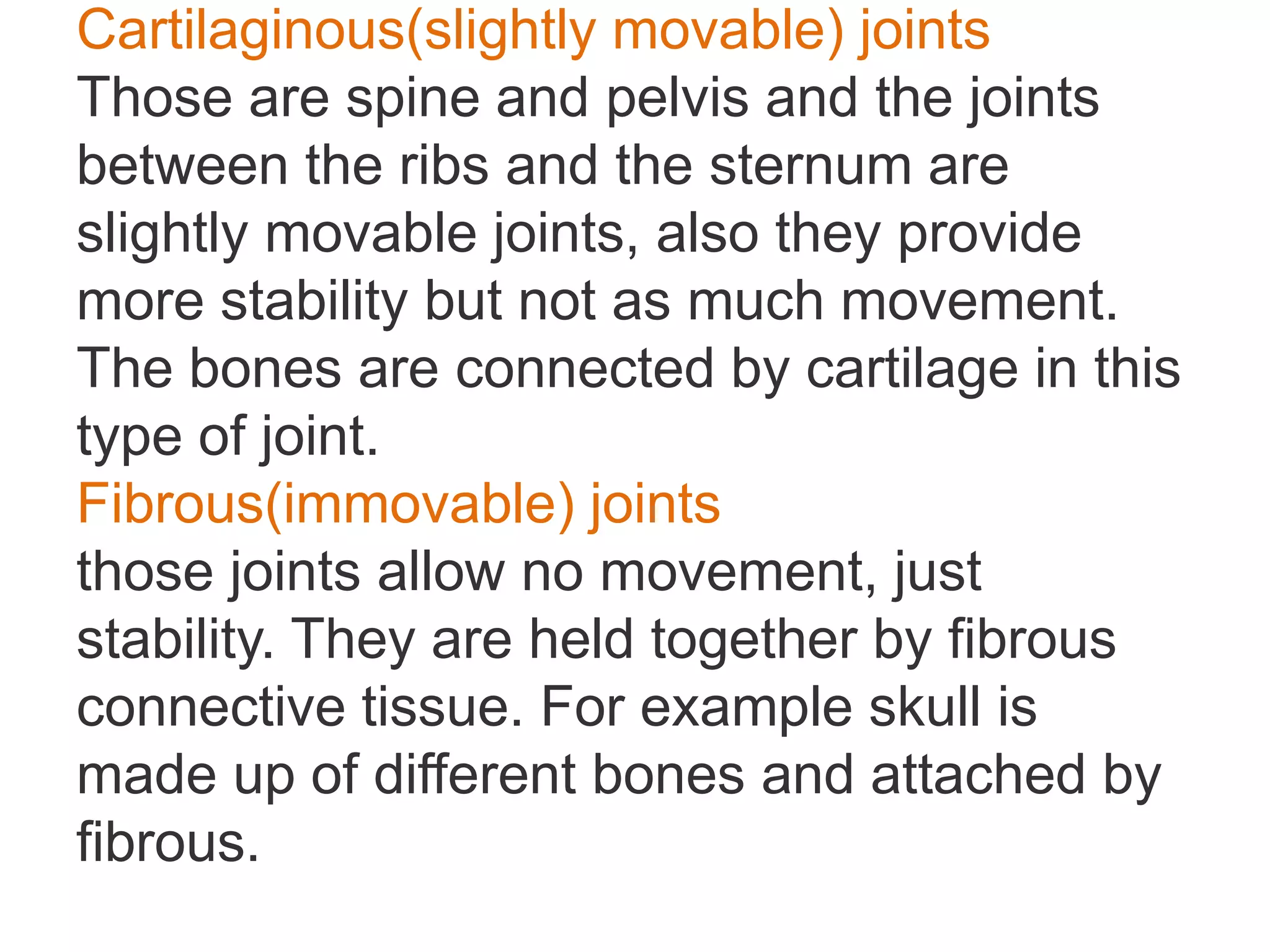The document discusses locomotion and movement. Locomotion refers to the movement of an organism from one place to another using appendages like limbs. It is voluntary and requires energy. Movement is a broader term that refers to any type of motion and can be either voluntary or involuntary. The skeletal and muscular systems work together to enable locomotion and movement. The skeletal system provides structure and protection, while muscles contract and relax to cause movement at the joints. There are different types of skeletons, joints, and muscles that allow organisms to move in various ways.
















